Canadian Undervalued Stocks 2025
Undervalued stocks in Canada are usually identified as having a market value that is for one reason or another below their “true value.” The idea is that if you as an investor are able to identify these undervalued stocks while their purchase price is still low, then, someday in the future, when the rest of the world catches on, you’ll have made a pretty penny for your foresight.
It’s basically a how-to for “buy low, sell high.”
With the TSX having lagged U.S. and European markets recently, several blue?chips trade well below their long-term value estimates. Below are 7 large-cap Canadian undervalued stocks that look attractively priced as of mid-2025. Key metrics and catalysts are given for each. (Figures are approximate; P/E and yields from latest reports.) All of the info suggested here is based on Dividend Stocks Rock advanced tools and analysis. Check out our full Dividend Stocks Rock review for more information.
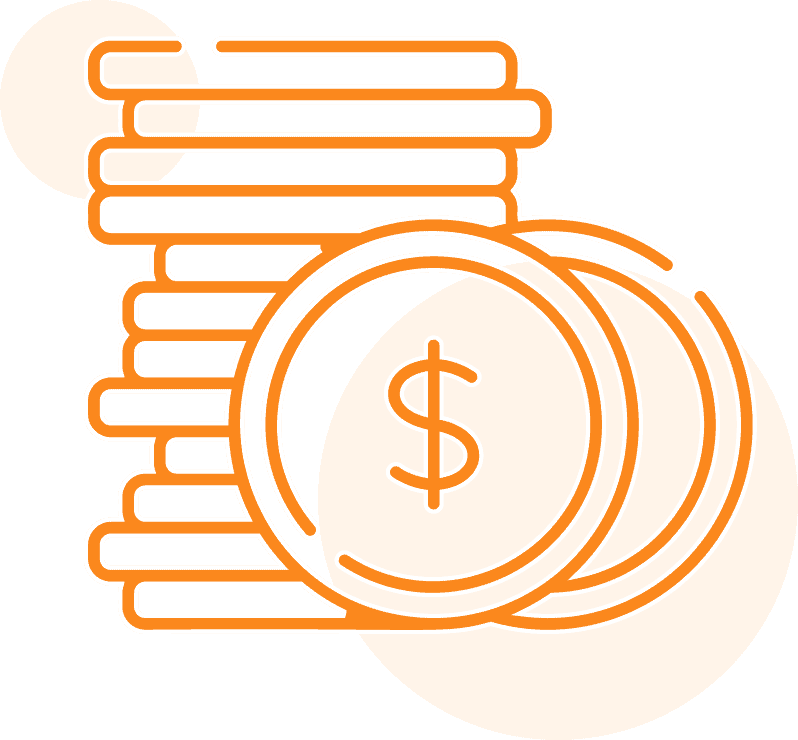
Best 2025 Broker Promo
Up To $2,000 Cash Back + Unlimited Free Trades
Open an account with Qtrade and get the best broker promo in Canada: 5% cash back when you fund a new account!
The offer is time limited - get it by clicking below.
Must deposit/transfer at least $1,000 in assets within 60 days. Applies to new clients who open a new Qtrade account by November 26, 2025. Qtrade promo 2025: CLICK FOR MORE DETAILS.
7 Best Canadian Undervalued Stocks
When looking for the best undervalued stocks, you’re looking for established companies with a long history. Ideally, they are companies with steady year-over-year growth, as well as decent dividend payouts. In Canada, banks and oil and energy stocks do just that, which is why they are our top picks for undervalued stocks.
Bank of Montreal (TSX: BMO)
Beginning with the most undervalued of the Canadian bank stocks. BMO is one of Canada’s Big Six banks, with diversified lending and a growing U.S. franchise. Morningstar pegs BMO’s fair value at about C$146, vs a share price near C$132 (Price/Fair ?0.91).
That implies a roughly 9% discount. On a P/E basis BMO trades around 10–11×, and it yields about 4.8% (4.7% trailing yield). Its common equity Tier-1 capital ratio (~13.6%) is high, and the bank targets a 40–50% payout ratio.
In short, BMO’s balance sheet strength and buyback potential make it a defensive value play. Continued buybacks (once earnings normalize) and steady loan growth could lift BMO toward its intrinsic value.
TELUS Corporation (TSX: T)
Telus is the wireless/internet provider with a fast-growing health-tech arm. Morningstar notes Telus trades ~27% below intrinsic (roughly C$21 vs $29 fair).
At $21, Telus yields nearly 8%. It recently endured price war noise and high capex, but those factors should ease. Growth in Telus Health services and 5G expansion, plus any future spectrum windfall, could boost margins. For income investors, its high yield and stable legacy service base provide a cushion as multiples re-rate.
Yes, debt and interest rates are valid concerns. But Telus (and the other two telecom giants actually) appear to have some interesting strategies for unlocking some asset value and paying down debt sooner rather than later. So far, I haven’t seen anyone suggest that Telus will not be able to pay that juicy dividend.
Cenovus Energy (TSX: CVE)
Cenovus is an integrated oil producer and refiner. It trades around C$19 vs StockCalc’s C$22.67 valuation (~18% undervalued). This implies a forward P/E 12× and a 4.5% dividend yield. Investors have been wary due to pipeline bottlenecks and commodity swings. While the lower oil price is a clear cause for concern, it appears to be more than baked in at this point.
Cenovus has low break-even oil sands assets and growing U.S. refining, which insulated it somewhat from oil price dips. Given its strong balance sheet and re-commitment to dividends, Cenovus looks underpriced relative to peers when energy markets tighten.
My view is that there is really only upside here, as the current price can only be justified if oil prices continue to freefall – and stay down for a prolonged period of time. If oil prices come back at all to longer-term norms, Cenovus’ free cash flow is going to justify a substantially higher price point.
Nutrien Ltd. (TSX: NTR)
Nutrien is the world’s largest fertilizer company (potash, nitrogen, phosphate). Nutrien earns from crop nutrients, a necessity for global food production. It trades around C$79 vs Morningstar fair C$99 (roughly a 20% discount). Its P/E (~54×) is deceptively high due to cyclicality, but it still yields around 4%.
The ag sector has been under pressure (soft commodity prices), depressing Nutrien’s stock. If farming profits and crop prices recover, Nutrien’s earnings and cash flow could surprise on the upside. In the meantime, a nearly 4% dividend and potential merger synergies (e.g. cost-cutting) make this fertilizer leader a value play for long-term food demand.
Restaurant Brands International (TSX: QSR)
RBI owns Tim Hortons, Burger King and Popeyes. Its stock is about 18% below Morningstar’s fair estimate of $109. P/E is in the high teens, and it yields about 4%. All cards on the table, I’ve never been a big fan RBI or the restaurant industry. It’s just such low margins. That said, given the inflated multiples of other large-cap stocks right now, maybe the boring world of Tim Hortons is finally undervalued.
RBI’s growth has slowed amid inflation and competition, which hit same-store sales. Tim Hortons has pricing power in Canada, and RBI continues to expand globally (e.g. Popeyes in Europe). Re-accelerating consumer traffic post-pandemic and improved supply chains (lower input costs) are boosting margins. Franchise growth will be key going forward.
Canadian National Railway (TSX: CNR)
CNR is Canada’s largest railroad, and perhaps the poster boy for Canadian Wide Moat Stocks. They’re quite clearly not building more railways anytime soon. Shares are about 11.6% below Morningstar fair value. P/E is 21× and yields 2.5%. Freight volumes have been choppy (dry bulk, energy), which helps explain the softness. General headlines of tariffs and recessions have tamped down expectations for both of the Canadian railways.
CN benefits from intercontinental trade, intermodal (ports to U.S. markets) and pricing power. Infrastructure spending (including rail) and rebounding commodities (oil, grain) should lift volumes and pricing. Over 5–10 years, CN’s unique network and growing ecommerce-related cargo are likely to drive earnings higher, closing the valuation gap.
Barrick Gold (TSX: ABX)
While I’ve never been a big invest in gold guy, Barrick is a worldclass top-tier gold miner (with significant copper byproducts). It trades ~$25 vs a valuation ~C$30 (?21% undervalued). Its P/E is about 14x which is unusually low considering how high the current price of gold is. Current dividend yield is 2.12%.
Geopolitical tensions or inflation fears could keep gold prices strong. Barrick’s low-cost mines and recent cost cutting position it to outperform peers when the cycle turns. In effect, you’re getting gold exposure 20% cheaper than model valuations suggest.
Each of these companies combines established businesses with solid cash flows. Most also pay dividends that exceed bond yields, adding income while you wait. Their current discounts reflect sector-specific pressures or cyclical troughs.
Over the long term, return to normalized earnings power (and any rebound in pricing) should close the gap. That’s exactly the sort of “beaten down” look that you’re searching for when you’re highlighting undervalued stocks.
Best Stocks to Buy for Under $1
Look – we get asked all the time about the best penny stocks in Canada or the best Canadian stocks to buy for under a dollar.
But the honest truth is that trying to figure out that volatile world is a nightmare. The metrics are incredibly difficult to project into the future and often the companies do not offer any long-term competitive advantage (unlike undervalued Canadian bank stocks or energy stocks).
Before you look at buying stocks under $1, I’d ask you to do a little reading on the risk levels associated with these companies. Personally, I don’t own any of these companies in my portfolio, so I wouldn’t be comfortable recommending them to others.
However, if you are still interested in cheap stocks, check out our thoughts on the Best Penny Stocks in Canada.
A third factor that I consider before adding to a position is the use of basic technical analysis, more specifically, using the long-term moving average.
How Do I Determine Canadian Undervalued Stocks?
Ok onto why you are here, how do I determine when Canadian dividend stocks are undervalued? I tend to use a combination of methods and here are the three that I use most often.
Relative P/E Ratios
A common metric for determining when stocks are undervalued is the Price to Earnings ratio, otherwise known as the P/E ratio. In this ratio, the stock price is divided by its annual earnings to come up with a number. The lower the number, the “cheaper” the stock.
The one thing about this ratio is that it can be deceiving in that “earnings” can be manipulated with creative accounting. As well, some industries often report relatively low “earnings” but have strong cash flow (like real estate investment trusts). Another variable, sometimes the market rewards growth companies with a higher P/E.
As you can see, P/E ratio can be subjective and not a great single measure of value, but I often use the P/E ratio as a comparison and starting point when researching strong companies within the same sector.
Average 5-year Yield
Another way that you can see if a company is trading at below their historic levels is to compare its current yield to its 5-year average yield. Remember that dividend yields go up as the stock price goes down.
So if the current yield is higher than the 5-year average (ie. attractive), then it may be a good starting point for your research on why it’s trading lower, and if you expect the fundamental business to continue growing going forward. If everything appears normal and it seems that the market is just being temperamental, then it may be time to start/add to that position.
For example, as of this post, Canadian Tire is trading with a yield of 4.35% and their 5-year average yield is 4.20%. This indicates that it may be a good time to add to (or initiate) your position depending on if you like their business prospects going forward. With a 14-year dividend growth streak at a low payout ratio of only 44%, you can see why I think it might be undervalued.
Payout Ratio
A payout ratio is the percentage of earnings a company pays its shareholders, usually in the form of dividends.
One way payout ratio is calculated is by dividing the dividends by net income:
Dividends/Net Income = Dividend Payout Ratio
A healthy payout ratio isn’t too low or too high. A high percentage means the company is paying out a considerable amount of their earnings, which means their cash flow will be tight. A low payout ratio could mean the company is in a growth phase and needs to reinvest profits to grow its operations.
Generally speaking, when it comes to building up a dividend portfolio, you’ll be looking for an ideal payout ratio of 30-50% as it shows the company is considering its investors, and wants to reward them, while maintaining growth of the company.
It’s important to point out that pipeline companies are an exception to this ideal ratio. Let’s take Enbridge (ENB) for example, with its 140% payout rate. At first glance, this might seem highly unsustainable, and therefore risky.
The reason is because companies like Enbridge calculate the payout ratio based on distributable cash flow, so the actual payout ratio is closer to 60-70%. This still might seem high, but it’s a strong company with a long track record of solid dividend payouts, so it’s still a safe bet.
Technical Analysis – Using Moving Averages
A third factor that I consider before adding to a position is the use of basic technical analysis, more specifically, using the long-term moving average.
Personally, I tend to add to positions when they are on an uptrend but have pulled back to their long-term moving average, like the 200 day simple moving average (SMA).
In the example below, I had a position in BIPC but noticed after a strong uptrend (first arrow) that it was selling off and it pulled back (second arrow) close to the 200 day moving average. I like the future prospects of BIPC and added to my position in the circle area.
Advanced Tools and Portfolio Management
Here at MDJ we fully endorse Dividend Stocks Rock. Headed by our friend Mike, they have an extremely impressive, proven track record when it comes to maximizing divided performance. With DSR, you’ll not only get access to some powerful tools that will immediately improve the way you manage your portfolio, but also direct advice and feedback from some of Canada’s leading experts when it comes to dividend investing.
Combined with our exclusive discount setup and the fact they offer a 60 days money back guarantee – there is currently no better choice on the market. You can read our detailed detailed DSR review, or sign up using the button below.
My Dividend Portfolio
If you are looking for a great way to achieve financial independence using stocks as a way to help you get there, Canadian undervalued stocks might be the best way to go. Dividend paying stocks in particular have the potential to give you returns that you can live on, paying your living expenses, giving you the financial freedom you’ve been working toward.
As many of you know, I use the dividend investing strategy for the Canadian portion of my portfolio. To summarize the strategy, I essentially own the largest dividend paying companies that have a history of annually increasing their dividend.
I started building my dividend portfolio many moons ago (around 2008), and it has grown to the point where it can support our annual recurring expenses. We have achieved financial independence.
In my financial freedom updates, I list my top 10 dividend holdings and I also point out that I add to my positions when they appear cheap.

Best 2025 Broker Promo
Up To $2,000 Cash Back + Unlimited Free Trades
Open an account with Qtrade and get the best broker promo in Canada: 5% cash back when you fund a new account!
The offer is time limited - get it by clicking below.
Must deposit/transfer at least $1,000 in assets within 60 days. Applies to new clients who open a new Qtrade account by November 26, 2025. Qtrade promo 2025: CLICK FOR MORE DETAILS.
The most recent update had the following top 10 positions:
- TD Bank (TD)
- CIBC (CM)
- Canadian National Railway (CNR)
- Royal Bank (RY)
- Scotia Bank (BNS)
- Bank of Montreal (BMO)
- Fortis (FTS)
- Enbridge (ENB)
- Emera (EMA)
- TransCanada Corp (TRP)
These top 10 positions vary quite a bit over time as their values go up and down. However, while their value goes up and down, these top 10 tend to pay dependable dividends that tend to increase over time. As I plan on living off dividends in the near future, income dependability is a high priority.
If you are just starting out, check out my post on how to build a dividend portfolio. The post shows that I tend to pick the leaders in each sector that pays a dividend and own them forever.
Here are some market leaders and a starting point for your research:
- Telecom – BCE (BCE), Telus (T), Rogers (RCI.B)
- Pipelines – Enbridge (ENB), TransCanada Corp (TRP).
- Banks – Any of the big banks: Royal Bank (RY), Toronto Dominion Bank (TD), Scotia Bank (BNS), Bank of Montreal (BMO), CIBC (CM); Insurance: Manulife (MFC), Great-West Life (GWO), Sunlife (SLF).
- Resources and Materials – Suncor (SU), Canadian Natural (CNQ), Teck Resources (Teck.b)
- Utilities – Fortis (FTS), Canadian Utilities (CU), Emera (EMA), Brookfield Infrastructure Partners (BIP.UN/BIPC), Algonquin (AQN).
- Health Care – Canada is weak in this sector in terms of dividend stocks.
- Consumer – Empire (EMP.A), Loblaws (L), Canadian Tire (CTC), Dollarama (DOL)
- Industrials – Canadian Pacific Railway (CP), Canadian National Railway (CNR), Finning International (FTT), Waste Connections (WCN)
- Technology – Enghouse (ENGH), CSU
- Real Estate – Riocan (REI.UN), CHP.UN, CAR.UN
When building a dividend portfolio, I believe that it’s important to simply initiate a position and keep adding to it as it becomes undervalued and/or when new savings become available to invest.
To learn more about the Best Canadian Dividend Stocks, check out our full article where we give you all the details on how you can build a passive income portfolio too.
Final Thoughts
Choosing the best Canadian undervalued stocks takes a bit of understanding beyond what you need to know for a more straightforward buy and hold type of purchase. However, once you know the basics, it’s pretty straightforward.
It’s really about looking for companies with a strong performance history and digging into a few key metrics to help you make your pick. Companies that are well established and have a decent growth record are going to be a good bet when it comes to buying undervalued stocks. Another key to helping you maximize returns on undervalued stocks is buying when the selling price dips, knowing it is likely to rebound and grow in the future.
An added bonus of these stocks is that you’ll get dividend payouts, so you can use your returns at the time of payout rather than decades. This is a big bonus for those looking to add money to their wallets without extra work.
Interested in learning more about the best dividend stocks in Canada? Head over to our Canadian Dividend Kings List and our Dogs of the TSX Dividend Stock Picks.

Best 2025 Broker Promo
Up To $2,000 Cash Back + Unlimited Free Trades
Open an account with Qtrade and get the best broker promo in Canada: 5% cash back when you fund a new account!
The offer is time limited - get it by clicking below.
Must deposit/transfer at least $1,000 in assets within 60 days. Applies to new clients who open a new Qtrade account by November 26, 2025. Qtrade promo 2025: CLICK FOR MORE DETAILS.
I've Completed My Million Dollar Journey. Let Me Guide You Through Yours!
Sign up below to get a copy of our free eBook: Can I Retire Yet?




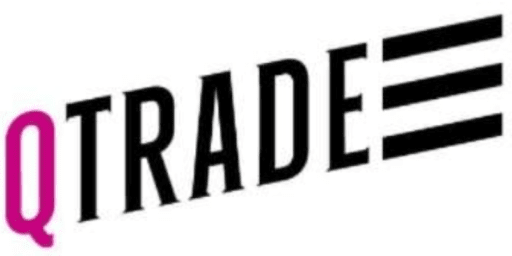

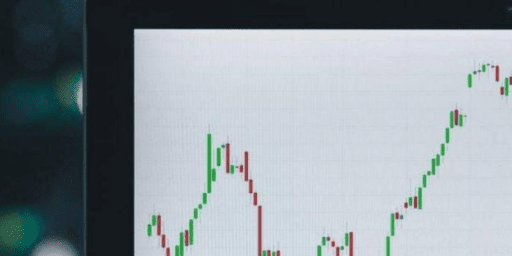
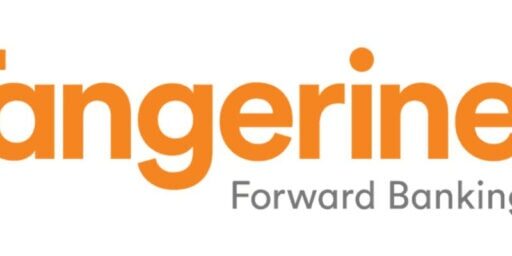

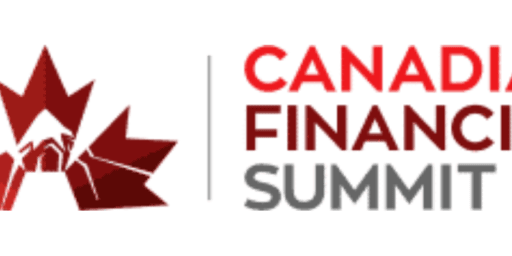

Nice list. Thanks for sharing. I keep adding NS and TD. I am also a fan of MFC and keep adding on red days. So far so good! It has higher yield than other big banks.
I also own ENB, CNQ, and TRP. I don’t feel I want to buy CU anymore. I am more into renewable energy and prefer RNW, BEP.UN over Oil companies. What do you think about the renewable energy companies?
And for health, I started buying 2 ETFs covering mostly US health companies. FHI.B (Yield 8.64% and HIG 6.04%). Yes, we lack good health stocks dividend or growth locally.